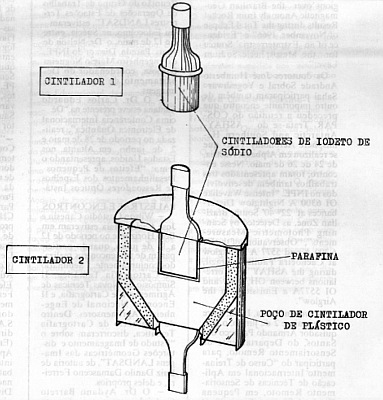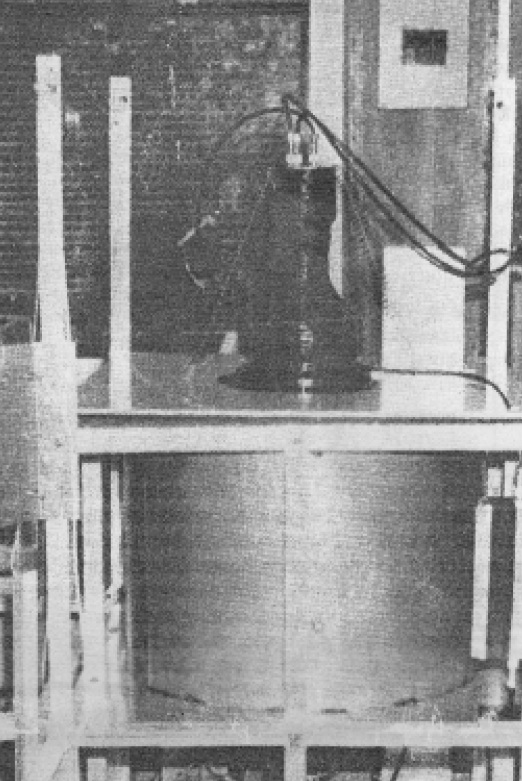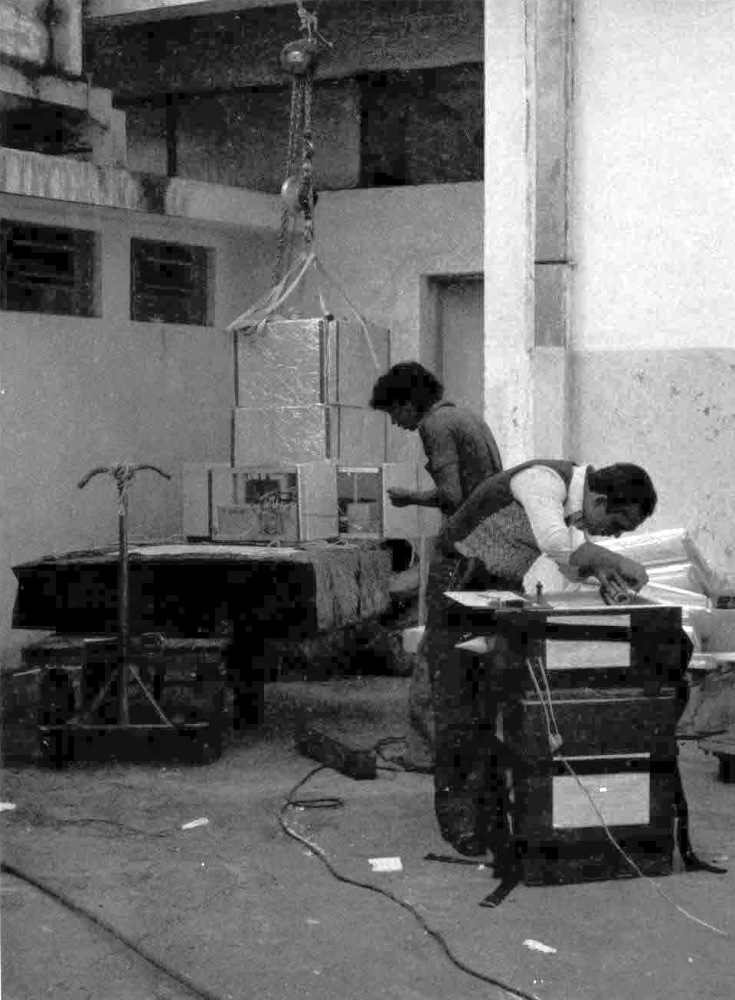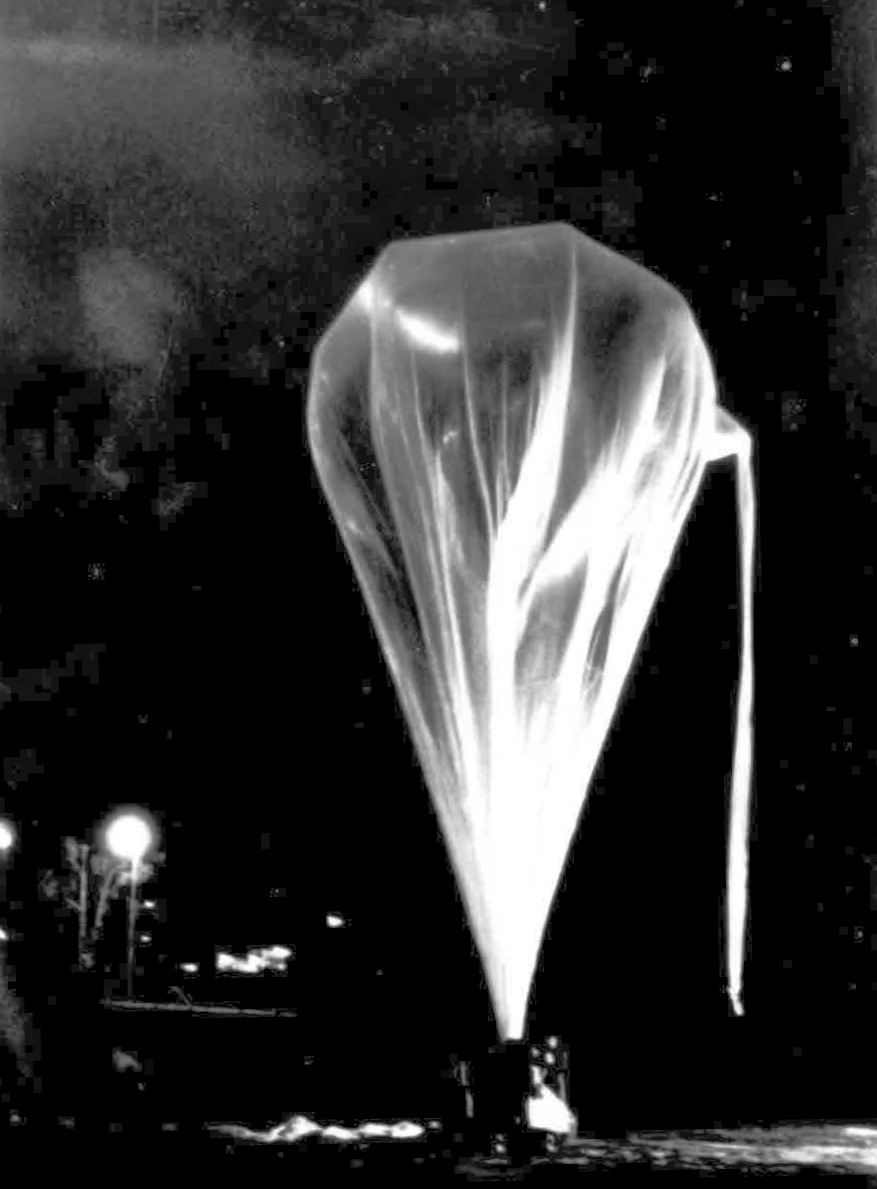Purpose of the flight and payload description
OLINDA was the acronym of Observações de Linhas Nucleares da Atmosfera (portuguese for Observation of Nuclear Lines of the Atmosphere). It was a project developed in late 70's at the Departamento de Astrofísica of the Instituto Nacional de Pesquisas Espaciais (INPE) with the aim of measuring the flux of gamma-ray photons of galactic and atmospheric origin and the lines of this radiation, produced by high-energy nuclear reactions. The project was of great interest at the time because it was the first time in Brazil that a telescope has carried out observations of nuclear lines in the atmosphere of the southern hemisphere. The development was aimed to later be used on board a small plane for the prospection of uranium-bearing regions on the earth's surface.
In the scheme at left we can see an scheme of the balloon gondola and the different elements of the detector (click to enlarge). Among the equipment that made up the telescope, there was the detector. It consisted of two thallium-activated sodium iodide scintillators, measuring 4 by 4 inches, and a plastic scintillator of the well type, whose function was to eliminate interactions of charged particles.
The two scintillators measured, separately, the flux of photons originating from the Earth's atmosphere and the lines of this radiation, produced by high-energy nuclear reactions. When aligned vertically, scintillator 1 detected both diffuse radiation from the atmosphere and radiation from galactic sources, while scintillator 2 only detected radiation from diffuse sources. This happened because, when moving, scintillator 1 covered scintillator 2 at intervals of 10 minutes, so that, during this period of time, only the first one managed to capture the radiation of galactic origin, scintillator 2 was wrapped in a cylinder of paraffin that absorbed atmospheric neutrons, thus protecting it from direct interaction with them. An electronic system, of anti-coincidence and discrimination in the form of pulses allowed to eliminate the interactions originating from charged particles in both scintillators.
Miniaturized pulse analyzers with 256 channels, separated photon energy, classifying them into 256 levels. In this way, a spectral analysis of photons of diffuse atmospheric origin and those of galactic origin was carried out. The telescope also carried a prototype of a microprocessor system that transmited on-board signals to INPE's telemetry station, in real time, at five-minute intervals. The telemetry set consisted of two transmitters (one at 224 MHz and the other at 1.680 MHz) and a VHF remote control, formed by an on-board receiver and a code system. The data was simultaneously recorded on analogue tapes for later analysis.
Details of the balloon flight
Balloon launched on: 6/4/1978 at 6:00 local
Launch site: Meteorological Research Institute, Baurú, Sao Paulo, Brazil
Balloon launched by: Instituto Nacional de Pesquisas Espaciais (INPE)
Balloon manufacturer/size/composition: Zero Pressure Balloon model 7PRP25 87.000 m3
End of flight (L for landing time, W for last contact, otherwise termination time): 6/4/1978 at 10:30 local
Balloon flight duration (F: time at float only, otherwise total flight time in d:days / h:hours or m:minutes - ): 5 h
Landing site: In Cambuí, Minas Gerais, Brazil
Payload weight: 190 kgs
Overall weight: 260 kg
The balloon was launched at 6:00 local time on June 4th, 1978 from the Campus of Companhia Paulista de Força e Luz (CPFL), close to Bauru Educational Foundation (FEB). After a nominal ascent at 320 meters per second, it reached a float altitude of 36.8 km where the ballon flew until 10:30 when the payload was separated for a safe landing in the vicinity of Cambui, Minas Gerais. Total flight time was 5 hours.
External references
- A infraestrutura do INPE para lancar balao cientifico Elisete Rinke dos Santos, editorial Transtec, 1993
- Nova tecnica de prospecção de urānio Revista Espacial Año VII Nº 32 - Mayo/Junio/Julio 1978
201If you consider this website interesting or useful, you can help me to keep it up and running with a small donation to cover the operational costs. Just the equivalent of the price of a cup of coffee helps a lot.





